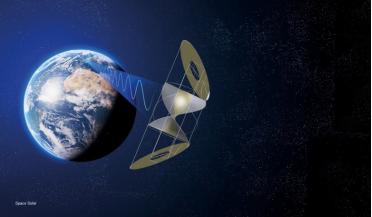 February 2021
In-orbit servicing and insurance – a marriage of convenience?
February 2021
In-orbit servicing and insurance – a marriage of convenience?
... (IS-901) to initiate final docking of the two spacecraft. MEV-1 successfully returned IS-901 to service in its designated position in GEO on 2 April 2020. Left: One of the leading satellite insurers, Swiss Re, left the space insurance market last...
 October 2021
A US space strategy for 2050: shaping a domain on the cusp
October 2021
A US space strategy for 2050: shaping a domain on the cusp
... Treaty has become obsolete New opportunities are pushing companies and nations to look beyond geosynchronous orbit (GEO), the orbit traditionally used for weather mapping, intelligence purposes, certain communication requirements, and other national...
 September 2023
A multifaceted approach to space sustainability
September 2023
A multifaceted approach to space sustainability
... in LEO, and other factors such as post-mission disposal. This has only been a consideration in geostationary orbit (GEO), where both the frequencies and the use of orbital positions are regulated by the ITU. But now...
 April 2024
Unlocking the NewSpace economy through space-based solar power
April 2024
Unlocking the NewSpace economy through space-based solar power
... GW). For an average system size of 2 GW, that would mean a demand for approximately 570 SPS in geosynchronous (GSO) or geostationary (GEO) orbits. According to the IEA, to hit ‘Net Zero’ by 2050 the world will need to increase its production...
 April 2024
The promise of solar energy for sustainable development and space exploration
April 2024
The promise of solar energy for sustainable development and space exploration
... be undertaken in such a way as to constitute an actual or implied “appropriation” of outer space, including with respect to the use of GEO orbital locations. Space-based solar power involves transforming solar power into electricity via photovoltaic...
 May 2024
The challenges of satellite communications on the move
May 2024
The challenges of satellite communications on the move
... receive channels and a single transmit channel so it can simultaneously receive from both LEO and expand MEO/GEO using a single flat antenna operating in the Ku-band. Another factor that has a bearing on antenna performance, which...